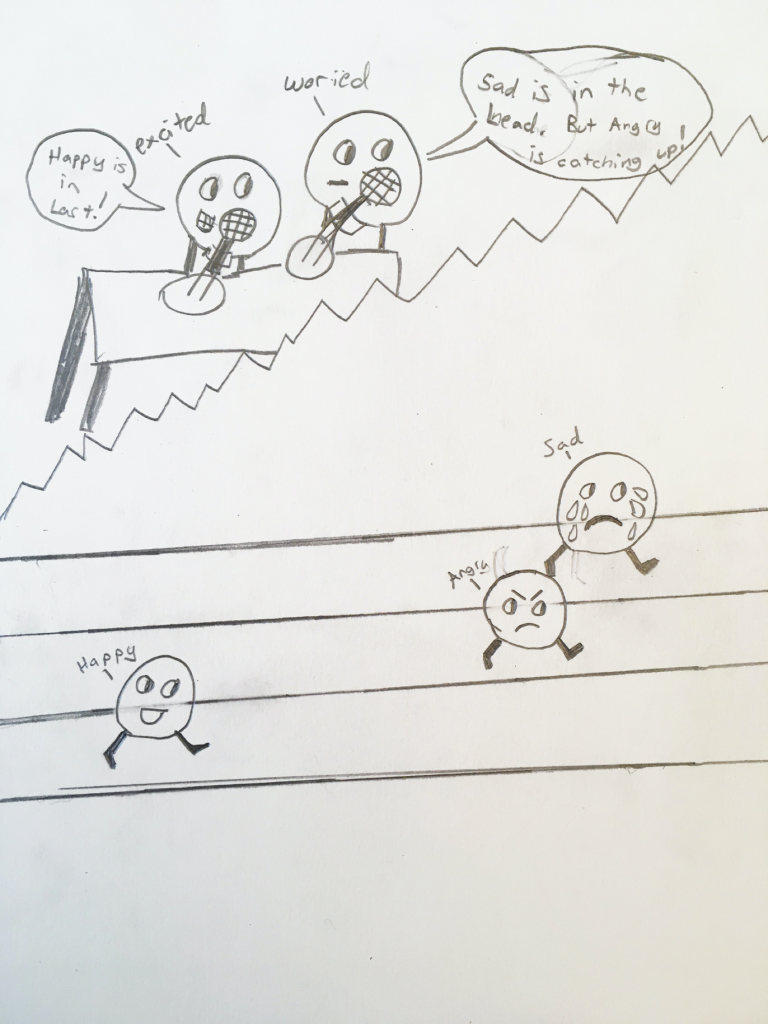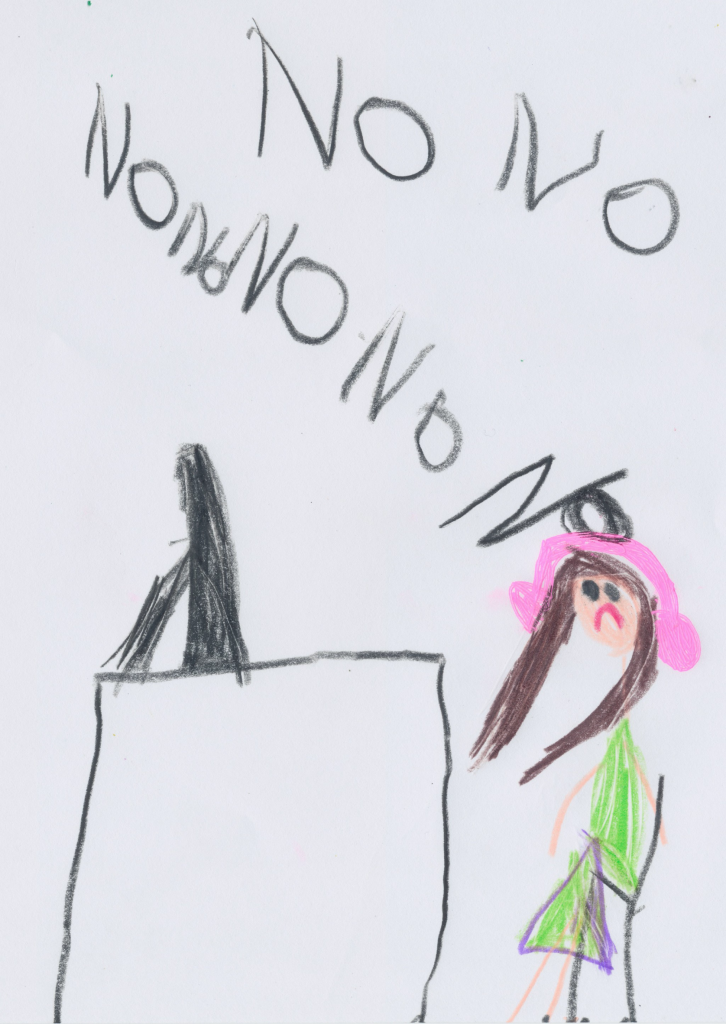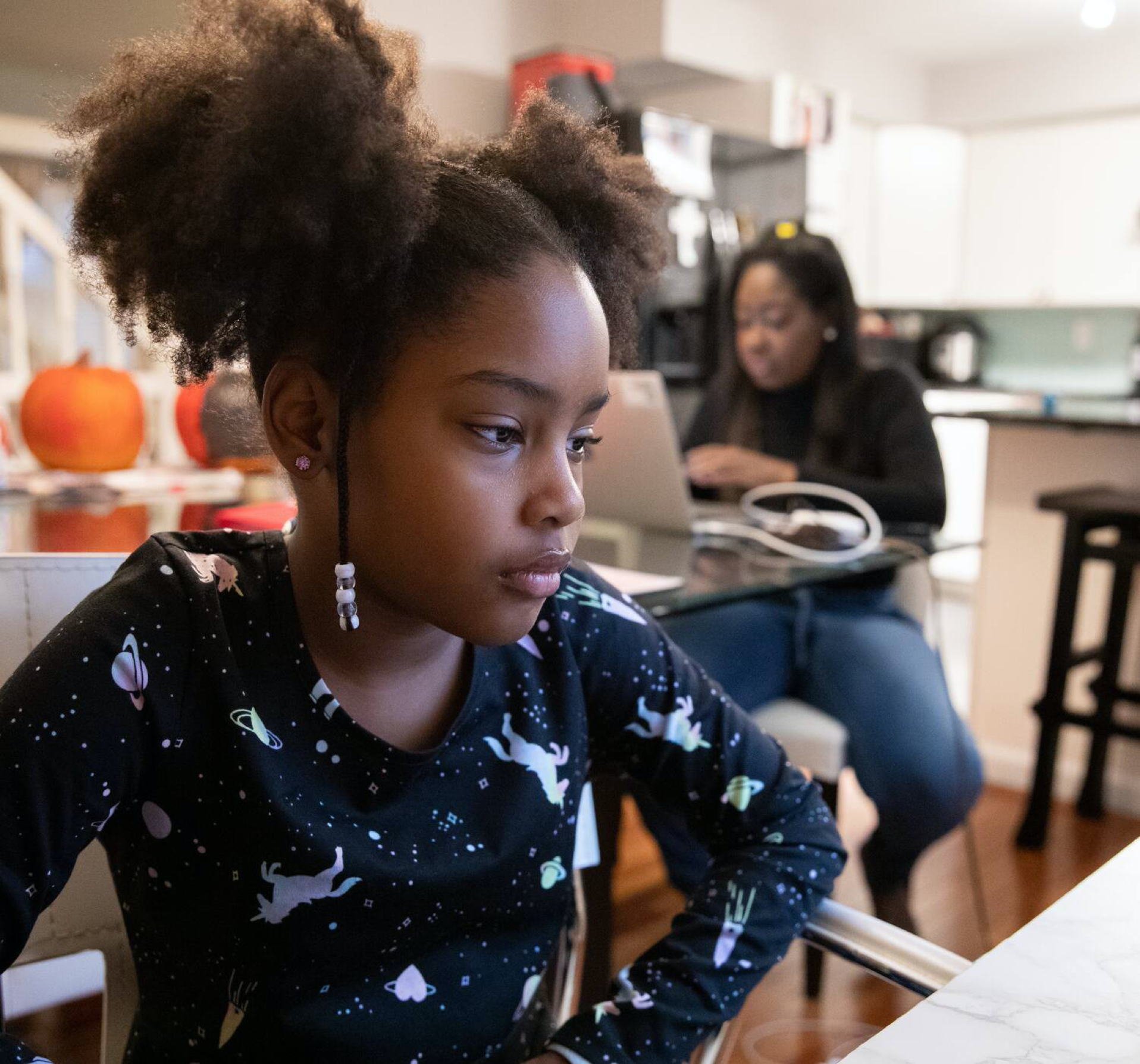Sophia Sanchez, age 9 and stuck in perpetual Zoom school, is crying a lot lately.
Her mother and sister rush in and ask what went wrong. Did the Internet go out again? Is her computer plugged in? Is the math too confusing? Sophia can’t really answer. She’s too upset, wondering whether she’ll ever learn new things again, fearing she’ll fail the fourth grade and, more than anything, missing her friends. She hasn’t seen a single friend since March, when she was in third grade.
“So I just get really angry and frustrated,” she said. “I cry.”
Some children are doing fine with remote school; some even prefer it. But many others are like Sophia: They are suffering emotionally, mentally and even physically from so many hours, often alone, in front of a computer screen.
To gauge the struggle, The Washington Post asked parents nationwide to share stories and artwork produced by youths participating in the mandatory home-school experiment, garnering more than 60 responses from families living in 18 states.
School-age children are losing interest in food. They are complaining of back pain and burning eyes. They are developing feelings of depression.
It is unsurprising, even predictable, experts say, and likely to get worse the longer school campuses throughout the country remain shut down.
“The strain on kids is enormous,” said Matthew Biel, chief of the child and adolescent psychiatry division at Georgetown University School of Medicine. “Your 7-year-old wants to be recognized when they raise their hand. Oftentimes doesn’t happen on Zoom. They want to be able to make a comment, make a joke with a peer — can’t do that, no chatting allowed. Wants to be able to get up and walk around the classroom and move — can’t do that, we need to see your face on screen.”
He said it can be particularly hard for children with special needs, developmental delays or social struggles, but it can also be challenging for youths who simply crave friendship and the comfort of school rituals.
Especially for younger children, Biel said, the only way to express shock, sadness and displeasure is through emotional, sometimes violent outbursts and tantrums. And, although parents across the United States are rushing to reassure their children, they cannot provide the one answer that would help most — telling children when the pandemic will be over.
“This is just how life is now,” Biel said. “None of us can really share with our kids when it is going to end. We don’t know.”


‘You get frustrated and furious’
For Creedence Peterson, the school day has become a lesson in discomfort.
It starts when the 12-year-old pulls on his uniform: white button-down shirt, gray slacks, blazer and tie, as mandated by his New York City private school. Then he sits down on his bed, where he will spend the next six hours attending an almost unbroken string of Zoom classes.
Immediately, the waistband cuts into his stomach. The blazer feels hot.
Two hours in, his neck starts to bother him. His muscles feel strained, stretched. Holding his head in the same position for so long is unnatural, just plain wrong.
But the worst is when his eyes start to water and itch, which they almost always do. Creedence rubs them, and that helps, but within seconds they hurt worse. Soon they’re bloodshot, so ghastly looking that his parents at one point tested him for pinkeye — but no, it was just from staring at a screen for so long.
One room over, his 8-year-old sister, Piper, who attends Zoom classes while in her bedroom, usually starts feeling lightheaded at Hour 3. Her eyes begin burning around then, too. She takes every one of the “stretch breaks” her school offers, but what she would really like to do is run out to the playground for a game of tag.
That, Piper is sure, would make her feel better — or at least closer to how she used to feel before the pandemic, back when she woke up every morning feeling happy. There wasn’t a particular reason, she said. She just remembers being excited for the day.
That almost never happens now. Instead, “you get frustrated and furious,” Piper said. “Like, you don’t want to look at a screen. You don’t want to be at online school. You start crying.”
Creedence said he is just as frustrated as his sister. He would like to complain about school to his friends — in online chats, because he can’t see them in person — but so many of his friends have moved away. There was the family that left for Florida, and the twins, once his best friends, who now live in the Hamptons. Their parents decided they didn’t like New York anymore, Creedence said.
Piper misses her soccer team. Creedence misses the doughnut shop across the street, which recently shut down because of a lack of customers.
When things get too sad or weird, the siblings like to lose themselves in video games. The nice thing about a video game, Creedence said, is that it lets you shape the world the way you want it to look — or, he clarified, the way you need it to look.
But as soon as he closes the console, the same fear surges back.
“We might never be able to go back to some of our favorite restaurants, because they closed down, and we might never really see our friends again, because they moved away,” Creedence said. “This may never get back to normal.”
Artwork examples from kids
The holes she could not fill
At the start of the school year, Karen James tried to make things as normal as she could for her 7-year-old daughter, Olivia Gabriela James. She took first-day-of-school photos and dressed her up in nice school clothes. Olivia was right on time to her at-home workstation, in the dining room of the family’s home in Alexandria, Va.
But as time went by, James found there were holes she could not fill. Sometimes the mother felt helpless.
The most popular and interesting stories of the day to keep you in the know. In your inbox, every day.
“Hands tied, I can’t change anything myself,” she thought. “And I’m doing the best that I can. Right? Which on some days doesn’t seem good enough.”
A single mom, James had to balance helping her daughter with her own demanding work-from-home responsibilities.
Olivia complained about technology (“It’s glitchy”) and missing her friends (“It’s really hard”). She longed to be in the same room with her teacher. The death of George Floyd added a layer of pain that Olivia, who is Black, is barely able to process. The second-grader glimpsed some of the news footage, and her mother felt forced to talk with her about injustices years before she would have liked.
“George Floyd died, and it just made me really sad, upset,” Olivia said. She knows exactly what happened. “The officer put his knee in his neck so he couldn’t breathe.”
The hardest blow came just before Olivia’s birthday, on Aug. 2, when James had to tell Olivia that her grandfather would not be coming to the house for her party. He comes every year, so when James told her daughter that he wouldn’t be showing up this year, she feared Olivia would think it was a trick, setting up some kind of super-special surprise.
“No, baby, really, this time Grandpa can’t come from Florida,” she told her. “It’s real.”
Olivia was in tears. So was her grandfather, leaving James forced to comfort both her father and daughter.
“I just think about the long term and how it will affect her academically as well as emotionally, and I try to give as many hugs and kisses and support as I can,” James said. “And I tell her, you know, we’re all doing this, like everyone in America this is happening to right now. But I wonder sometimes, you know — am I just talking over her head? So [I] just try to love on her, the best I can.”
Artwork examples from kids
‘It’s like a roller coaster of emotions’
Luke Pages, 12, has a lot of trouble guessing how his days are going to go.
Not because of online school — that’s predictable. He knows how many 15-minute screen breaks to expect. He knows he will be taught by seven teachers over the course of the week. And he knows exactly how tired he will be — and how much his head will hurt — by the third Zoom class.
The uncertainty is due to his constantly shifting emotions.
“Emotions” is not a word Luke used a lot pre-coronavirus. The sixth-grader, who lives in Gaithersburg, Md., with his parents and little brother, Ethan, never spent time thinking about how he was feeling before. The answer was almost always “good.”
He is still happy, sometimes. But that sense of well-being has an expiration date now, and he never knows how long it will last. On good days, an hour. On not-so-good days, 10 minutes.
On the most stressful days, he just starts crying and can’t stop.
“I don’t know why,” Luke said. “It’s like a roller coaster of emotions.”
Ethan, who is in fifth grade, has come up with his own words to describe what is happening inside his head. “Big feelings,” he calls it.
“I am feeling very sad and angry,” Ethan said. “Sad because I can’t see my friends and the people I miss. Angry because I have to see the same people, including my annoying brother.”
He also wishes he could see his teachers in person. Watching them on Zoom is “fine,” but the 10-year-old sometimes feels as if his teachers are not really his teachers — and he’s not a real fifth-grader — because he has never actually set foot in a classroom.
Ethan has questions about his lessons, and he doesn’t know how to put them into words that will make sense in an online chat or an email, which is the only way to win private time with the teacher. He would like to walk up to his teacher and explain his confusion with his hands. Sometimes, especially when school is hard, he closes his eyes and imagines doing that.
Luke, meanwhile, daydreams about something he always took for granted — the several-minute slices between every lesson. Back in real school, that is when he walked the hallways with his friends, headed for the next classroom. He can’t remember what they talked about — just random stuff, probably. Now, he can’t even see his friends’ faces, because not everybody likes to turn their cameras on for Zoom class.
Although the rest of his emotions have gone haywire, the 12-year-old said there is one feeling he can always count on: The end of every school day brings the same exhaustion and disappointment. If Luke could just go play football with his best friend after school, the way he used to, that might make him feel better. Instead, he’s developed a mantra.
“We’re all in this together,” he tells himself. “We will get through it.”
Artwork examples from kids
It doesn’t feel like she’s talking to her best friend
Sophia Sanchez in Los Angeles knows who she would like to tell about everything going wrong with her life — her best friend, Sofia, who shares her name and whom she has known since first grade. Before the pandemic, she and Sofia were working on an illustrated book about a spy. They drew side by side at recess, unfolding new details of the plot with every picture. And they talked — about school, what was happening that day, how it made them feel.
Sofia is the only friend Sophia has spoken to since school shut down. But her mother doesn’t have Sofia’s mother’s number, so Sophia messages Sofia through the chat function of an online game they both play. It’s okay, Sophia said, but it doesn’t really feel like she’s talking to her best friend.
If the coronavirus were somehow gone tomorrow, that’s who Sophia would want to see first. She would march straight back to normal school. She would head for the monkey bars, where she would race Sofia, just like before.
This time, for once, she’d let Sofia win.




